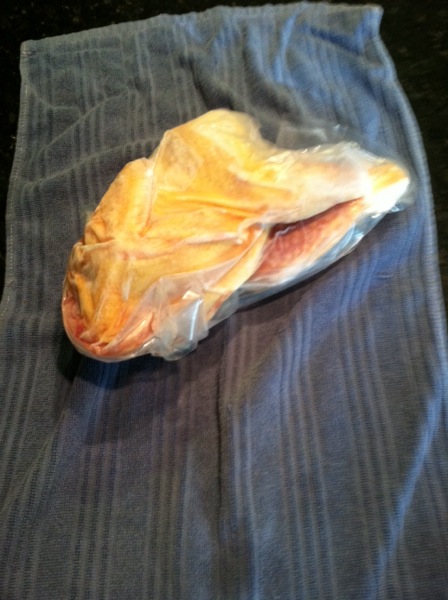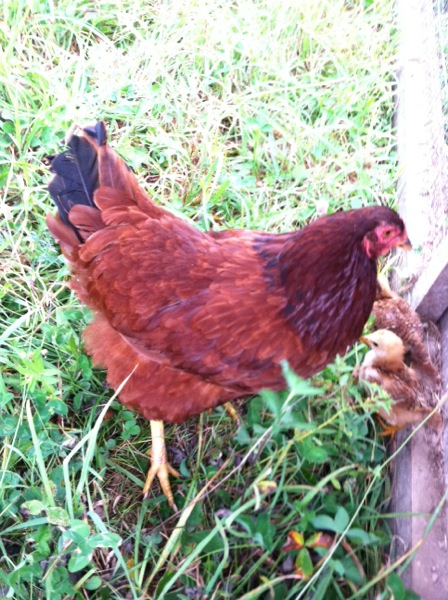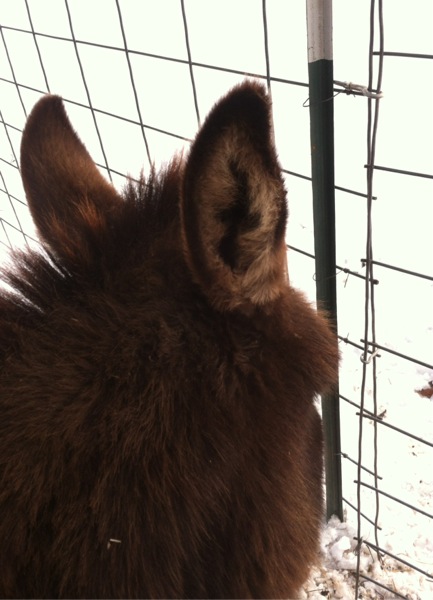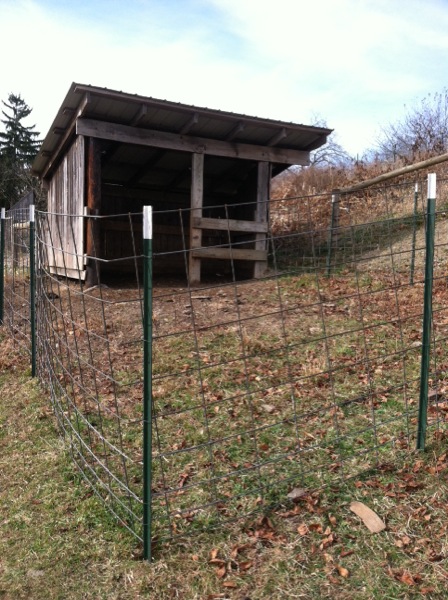The three spotted piglets have finished their electric fence training in the barn.
They started their training with a stall and a small outside run, fenced with two strands of electric polywire, backed by pig panels. The panels kept shocked piglets from running forward when they encountered the electrified fence.
Once the sheep were out of the barn, the piglets had access to the rest of the barn where they rooted and turned the bedding.
I built a second run with electric fence , not closely backed by panels, but surrounded by fence and the winter coop.
I backed the trailer, with modified livestock pen sides to the barnyard. With a filled grain bowl and eventually a fresh bale of straw, the three pigs walked up the ramp, into the trailer. It was time to move the trio to the prepared garden pigyard.
The garden pigyard is at the edge of the yard, close enough to the house to monitor the pigs' antics. To prepare the garden for the pigs' arrival, I left last year's turnips, weeds and volunteer rye to stand and I topped scoops of corn with wheel barrow sized piles of barn bedding. The pighouse was dragged into place and filled with fresh straw.
The pigs got right to work, rooting and digging.
With two strands of polywire and a strong fence energizer,the pigs are working for the farm.
After they finish working the soil of the garden pigyard, we will move the spotted trio to the Hill Field, where they will tackle weeds and work in leftover winter bedding and a lambing season's load of barn waste.




























